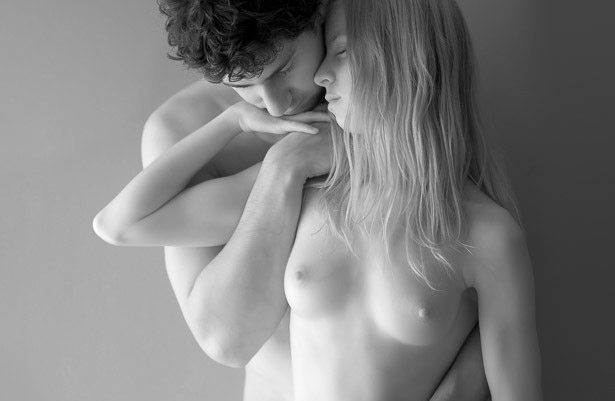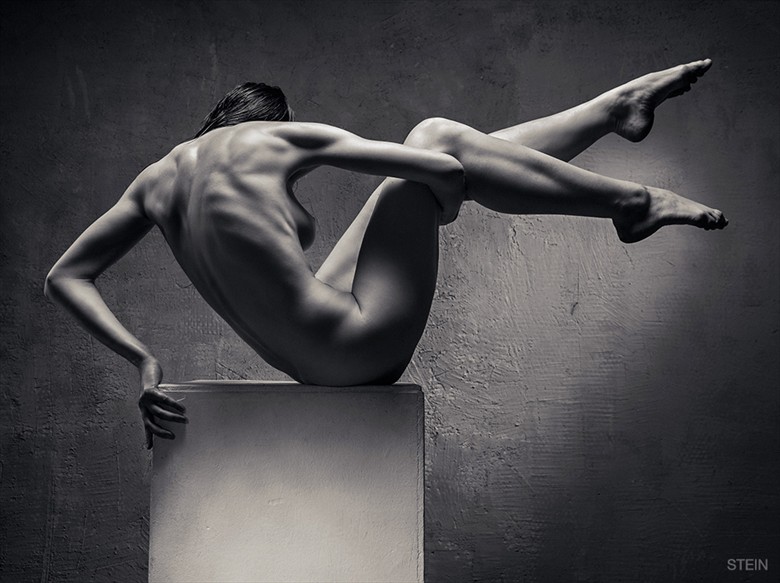Interview with Model Society Founder:
David Bollt

Image by Eric Boutilier-Brown
What is Model Society?
Model Society is an online social network for the best Models Photographers and Artists in the world who create images of models specifically as works of art. It’s photographers and artists who hold amazing creative perspectives, and have the skill to share their unique visions. It’s also models who want to express themselves, share a point of view or simply been seen and celebrated for what they are.
What is a model?
Regardless of what models are elsewhere, At Model Society a model is anyone who participates in the creative process. If you offer yourself to a photographer or artist as the subject of a work of art… you are a model.
Art models have been around far longer than fashion models, bikini models or glamour models. Many of the most enduring icons in history are the result of a collaboration between someone with vision and a model… Michelangelo’s David, Leonardo’s Mona Lisa and Degas’s Dancers are just a few examples.
At Model Society we have models who are classically beautiful (such as MelissaAnn), highly creative models (such as Katz Pajamaz) and models who bring new insights to the entire question of what a model can be. Jocelyn Woods for example was born with a condition that has her unable to stand or walk, yet she and photographer Thomas Dodd are creating tremendous works of art together. Jocelyn uses modeling as a vehicle to transcend disability and broadcast a powerful message of shared divinity and bliss.
Why does any of this matter?
It’s natural for people to be strongly attracted to images of beautiful human beings. Unfortunately, society often reinforces widely held perspectives that tell people this natural attraction is wrong. Much of what kills intimacy and understanding in the world, is shame around primal feelings that are part of who and what we authentically are.
Imagine how the world be different if we could all simply experience human beauty and nudity as art… as something good, and natural… without shame or judgment. We are creating a pedestal for human beauty so that people can enjoy the experience of beauty and creativity openly and without shame.
How is nudity as art related to or different than porn?
One aspect of porn that is often overlooked, is a genuine experience of beauty. Whatever good or bad someone might think about porn, it does give people the opportunity to look at beautiful naked human bodies. Because of culture’s bias against nudity, we have little opportunity to experience human beauty and nudity unless it’s delivered as “adult content”.
Rather than dehumanize our sexuality (as porn often does), and rather than shame our sexuality (as critics of porn often do), Model Society offers images of humanity that reveal deeper aspects of our nature and raise questions about what it means to be a human being. When we are invited to experience humanity as art, we have the opportunity to contemplate humanity as something sacred and miraculous.
I’m not saying porn would go away if there was more nude images as art, but certainly some people would find it a much more deeply satisfying alternative.
What inspired you to create Model Society?
It just seemed like it was missing! As soon as I thought of it, I was almost shocked that it did not already exist. Looking around I see beauty attached to advertising or I see nudity and sexuality generally associated with porn. Where can you go other to simply see human beauty on a pedestal as a work of art?
I have been a fan and participant in an enormous subculture that is deeply passionate about humanity as art. By bringing them together I hope the world can recognize them as an important art movement. To the extent that artists shape culture (or reveal aspects of our collective consciousness) I want this particular aspect to shine and be recognized.
What has you care? What has you inspired to be a part of this?
Back in artschool, working with models in figure drawing class transformed my experience of humanity. On my very first day the model had a very unique figure. She was not beautiful by conventional standards. She was actually a contortionist. Her body was oddly shaped. Her proportions were very unique. She was wiry and strong. At first, I experienced judgment and aversion. I ran smack into all of the accumulated cultural hypnosis that had had lodged itself in my perspective. I was drawing her, but I could not really see her. My drawings started off terrible.
Over the course of the next 3 hours in class, my judgments and assessments melted into a sense of deep wonder. Simply by drawing her, I accessed a much deeper appreciation for her as a human being and as an amazing work of art. In my attempts to create an image of her with charcoal, I came to marvel at how perfectly she had already been created by the universe. Every anatomical detail that I struggled with on paper was already beautiful expressed right before my eyes. My drawings started to shine.
After that any model… of any size, shape or age seemed like an entirely new universe. The subtleties, complexities and elegance of the human body became an endless playground for me to explore. My perspective soon extended beyond art and I found myself simply seeing people as beautiful and amazing.
Although there is a wide range of ages and body types represented at Model Society, there are a lot of thin pretty models. What is the difference between what we see at Model Society vs all the images of beauty we see in commercial culture?
There is a difference between “beauty standards” and “idealized beauty” We see beauty standards in advertising and most of commercial culture, images of beauty are being used to manipulate us and sell stuff. Our natural desire to be loved and accepted is being leveraged against us. Messages tell us we must look a certain way or have a certain type of body, otherwise we are rejected. Our natural attraction to beauty is attached to brands and products through an onslaught of advertising.
A lot of people push back against this manipulation, but instead of pushing against commercial agendas they push against beauty itself. There seems to be a movement to eradicate idealized beauty as if it were the enemy. Some blame their perception of rejection on beauty, rather than on the commercialization of beauty.
Idealized beauty is different than beauty standards. Idealized beauty is the celebration of humanity in the bloom of it’s ripest potential. When we see beauty through the eyes of creative visionaries we are not seeing a commercial agenda, we are simply experiencing one person’s unique inspiration. Look at Michelangelo’s David. It’s one of history’s most enduring symbols of human beauty. The David (unlike an underwear ad or a music video) does not tell me I should be a certain way. Instead, it’s a monument to the majesty of the human body… and it’s a monument to the vision and skill of one remarkable artist.
Flowers are prized in their fullest bloom. We don’t reject enjoying how we are impacted by a blooming flower (for fear of rejecting others as they fall from bloom). It is a reflection of depth to learn to appreciate the entire cycle of life from which bloom occurs. Celebrating one thing does not imply rejecting another. To me it seems perverse to reject beauty… however it occurs to us… in any shape or form.
What would you suggest to someone who is triggered by models, or nudity or maybe has shame around attraction or how they look?
I would say… First sit down and look at the georgeous works of art at Model Society. Look at the photography of Stein who captures images of models as if they were sculptures. Or look at the work of Uwe Schmida and Laila Pregizer who work with body painters and models to blend humanity and nature into one seamless experience.
Quiet your thoughts and judgments for just a few moments. Allow yourself to see the human body just like you would a beautiful landscape. Do you judge yourself or feel shame when you see a stunning sunset as beautiful? Can you see a human being in this same way?
If you want more self acceptance, I would encourage you to become the subject of a work of art. It does not matter if you experiment with friend or a photographer you admire. Most of the great artists I know will work with anyone who is inspired to create… regardless of how old you are or what you look like.
One of our models at Model Society (S nia) said that she was “reborn into confidence” after her first experience as an art model.
If that’s too much, consider creating self portraits just for you. Forget about society and culture for a minute… can you love what you see in yourself? You might discover that judgment of self, and judgement of others is actually all mixed up as one thing.
If you want to cultivate more appreciation, make images with someone else as the subject. If you don’t draw, take pictures. Find someone who inspires you and create some art, either someone who you are attracted to, or even someone you are repulsed by. It won’t matter, if your intention is to discover, you are likely to find a bottomless well of beauty in whoever you are working with.
Final thoughts?
The old saying, beauty is in the eye of the beholder is really true… literally.
Beauty is not something that exists outside of us. It’s an experience. Imagine a far away planet with no life on it. Without someone (or something) to see it as either beautiful or ugly, it is neither. If two people sit in front of a sunset and one says “beautiful” the other says “not”, what’s true? who’s right? Actually… They are both right, within their own experience of the world. We bring beauty to the world just as much as the world brings beauty to us.
Some people say that we are the universe seeing itself. I think maybe the universe wants to both experience beauty… and be experienced as beautiful. I don’t know how else to make sense of the layers and layers of mind blowing miracles that are unfolding all around… as soon as I put my attention on them.
You can reclaim a full and robust experience of beauty. I believe it’s the birthright of every single one of us.

Image by Stein